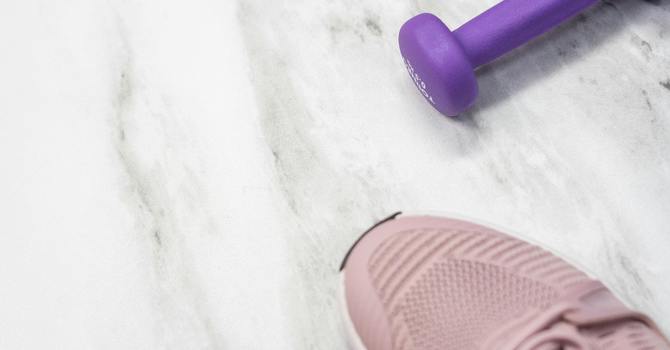
Why Your Big Toe Might Be Causing Your Back Pain (And How to Fix It)
Discover how Big Toe stiffness and poor foot mechanics can lead to lower back pain.
Learn at-home mobility tests, exercises and when to seek out a physical therapist.
The Case of the Mysterious Back Pain
Meet Casey. She was seen by our office with persistent low back pain that flared up after long walks. She had tried stretching, core exercises, even massage - but nothing brought lasting relief. When we assessed her walking mechanics, we noticed something odd: her big toe barely moved.
That tiny joint? It was the missing piece of her pain puzzle. Surprisingly, the mobility of your big toe plays a crucial role in how your entire body moves - especially you hips and lower back. If you've tried everything for back pain and nothing sticks, it might be time to look down at your feet.
How the Big Toe Effects the Spine
The big toe is more than just a stabilizer - it's a powerhouse during the final phase of walking. If it lacks proper mobility, your body starts compensating, which can lead to:
- Reduced hip extension
- Altered walking mechanics (gait)
- Pelvic Imbalance
- Increased lumbar spine stress
Overtime, this creates what's known as kinetic chain dysfunction - a domino effect of misalignment starting from your feet and working upward.
Think of your body like a building: If the foundation (your feet) is off, everything above it becomes unstable.
Signs Your Big Toe Might Be the Culprit
If you experience chronic back pain, particularly after long walks or standing for hours, here are some signs your big toe mobility might be involved:
Difficulty bending your big toe during walking or running
Foot pain, especially at the ball or underside of the big toe
Toes turning outward while walking
Early fatigue in your feet of lower back
History of flat feet, bunions or plantar fasciitis
These signs indicate poor toe mobility or dysfuncrion that can directly impact posture and back alignment.
Try this: You can perform a quick self-check in under 60 seconds with a Big Toe Mobility Test (At Home)
Sit in a chair and cross one ankle over the opposite knee.
Use your fingers to gently lift the big toe upward (towards your shin). Ideally, your toe should extend about 60-70 degrees.
If it feels stiff, limited or painful - your toe mobility is restricted. This could be a key driver behind chronic lower back pain.
How Poor Toe Mobility Alters Your Walking Mechanics
Withiout proper toe extension, you lose push-off power during walking. The time you spend on that foot during gait shortens and weightbearing shifts to the outside of your foot. Your hips over-rotate. Your lower back starts compensating for limited range of motion in the toe.
Long term compensation = chronic wear and tear on your lumbar spine.
It's Not Uncommon for this to Lead to Conditions Like:
Sacroiliac joint pain
Sciatic symptoms
Disc Strain
Hip flexor overuse
The Role of the Foot Core
Just like your torso has a core, your foot does too. Weak intrinsic foot muscles cause:
- Collapsed arches
- Overpronation
- Reduced toe control
All of this can further affect the foot-to-spine kinetic chain.
Improving toe strength and coordination helps resore healthy gait patterns and spinal alignment.
Best 5 Exercises to Improve Big Toe Function & Support Your Spine
These exercises rebuild mobility, strength and stability from the ground up:
1. Toe Extension Stretch
Place your toes on a wall or step edge. Gently press your heel down while keeping toes flat. Hold for 30 seconds, repear 3-4x/day.
2. Toe Yoga (Toe Lifts and Spreads)
Practice lifting just your Big Toe while keeping others down, then reverse it and lift all toes except the Big Toe. Repeat 10-15 reps each side.
3. Short Foot Activation
While standing, attempt to "shorten" your foot by pulling the ball of your foot toward your heel. Don't curl your toes - focus on subtle muscle engagement.
4. Towel Scrunches
Use your toes to scrunch up a towel on the floor. Keep your heel on the floor, not on the towel. This strengthens the arch, toes and improves proprioception (knowing where your joint is in space).
5. Heel Raises with Toe Focus
Rise onto the balls of your feet with focus on keeping weight on the Big Toe. Avoid letting the ankles roll outward.
When to See a Physical Therapist, If Your Pain Persists or Worstens:
A PT can provide:
- Gait analysis
- Manual Therapy for joint mobilization
- Custom exercise programming
- Orthotic consultation (if needed)
- Soft Tissue Mobilization
This is especially important if you've had recurrent lower back issues, bunions or plantar fasciitis, flat feet or foot surgeries.
Your Back Pain Might Not Be a Back Problem At All
The Big Toe is a small joint with a big role in how you move. Adressing dysfunction at the foundation of your body can create major improvements upstream - in your hips, spine and in overall daily comfort.
If your serioue about healing your back for good, don't ignore your feet. Start from the ground up. The fix may be under your toes.
Need help? Book a virtual or in=person evaluation with Dr. Elizabeth DPT, CLT. Let us help you walk stronger, stand taller and live pain-free.
Tags: big toe back pain, physical therapy for foot pain, toe exercises for back pain, foot mobility, kinetic chain dysfunction, walking mechanics, postural alignment, chronic low back pain, flat feet lower back pain
Related Articles
What Are the Symptoms of Sacroiliac Joint Dysfunction and What Causes It
10 Effective Exercises to Help Manage Leg Lymphedema
Dr. Elizabeth Baillie
Contact Me


